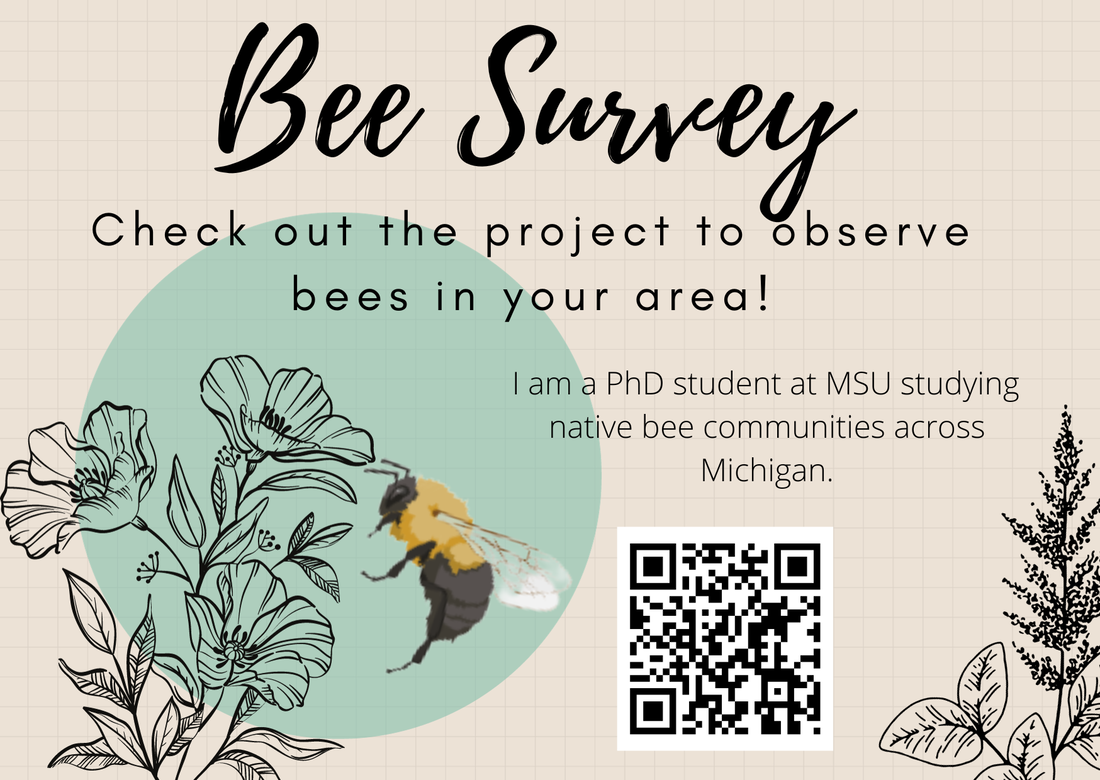Connecting native bee communities, land management, and human interactions
Objective 2. Determine effects of field-realistic pesticide exposure on bumble bees.Determine lethal and sub-lethal effects of field-realistic pesticide exposure on bumble bees. For each pesticide detected, the average and maximum concentration of each active ingredient will be determined in the three habitat types. From this information I will develop combined treatments that represent the type of pesticide exposure bumble bees will experience in each habitat type.
|
Objective 3. Compare pollinator and pesticide attitudes across different communities.To compare attitudes towards pollinators and pesticides across different communities to inform pollinator community science and conservation practices. This includes native bee awareness, pesticide use and perspective, and possible barriers to stakeholder involvement.
The survey is currently in the planning stage! Michigan residents can sign up here or scan QR code on this flyer. |
Other Projects:
Plant Community
During these surveys, plant species will be identified, as well as, collecting soil samples, soil compaction measurements, and amount of shade the plot receives. Samples will be used to calculate soil water holding capacity, texture, and nutrients.
Pollinator Community
Sampling would involve counting the bees and other insects for about 15 minutes around the plot. Future collections may also include a pesticide analysis.
During these surveys, plant species will be identified, as well as, collecting soil samples, soil compaction measurements, and amount of shade the plot receives. Samples will be used to calculate soil water holding capacity, texture, and nutrients.
Pollinator Community
Sampling would involve counting the bees and other insects for about 15 minutes around the plot. Future collections may also include a pesticide analysis.







